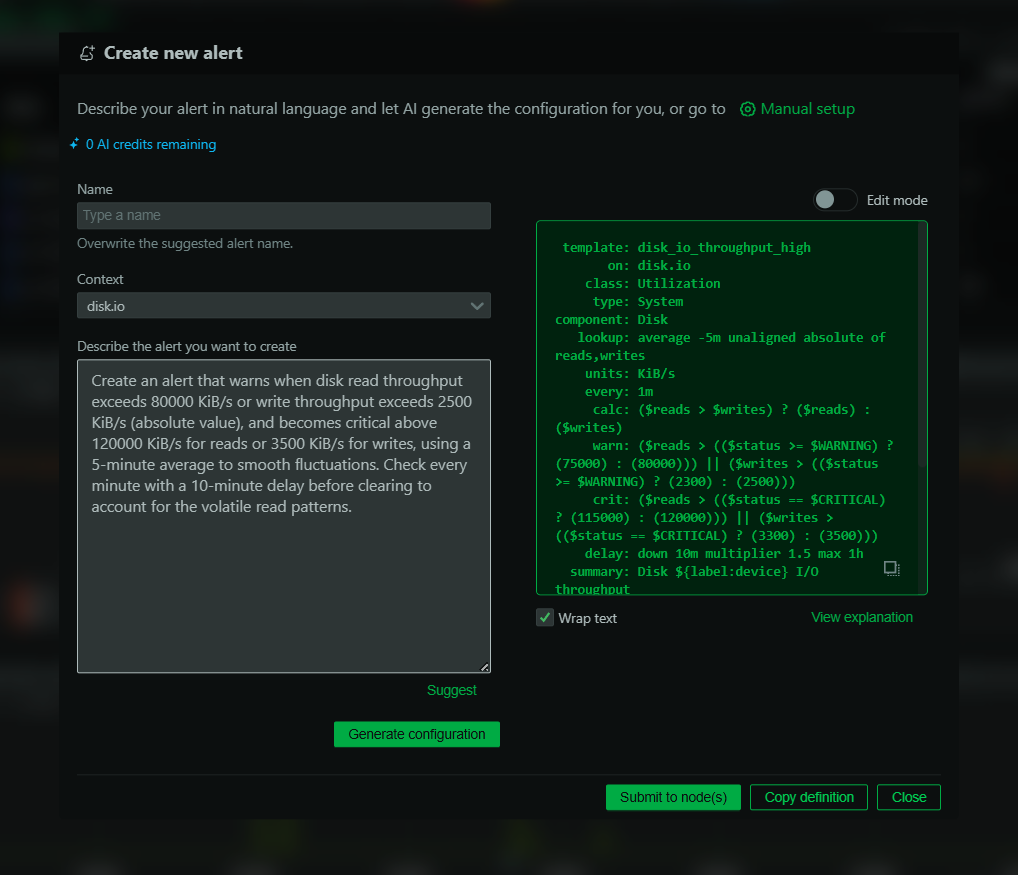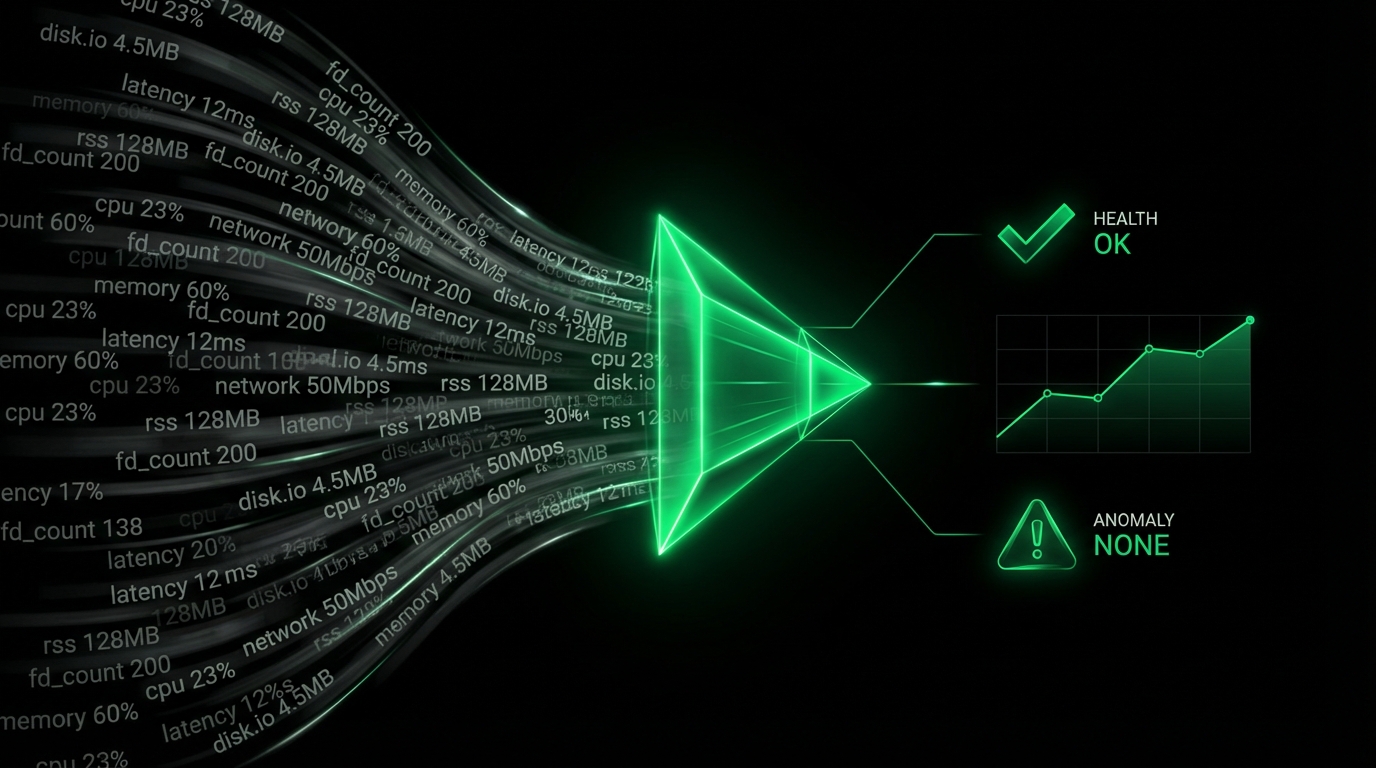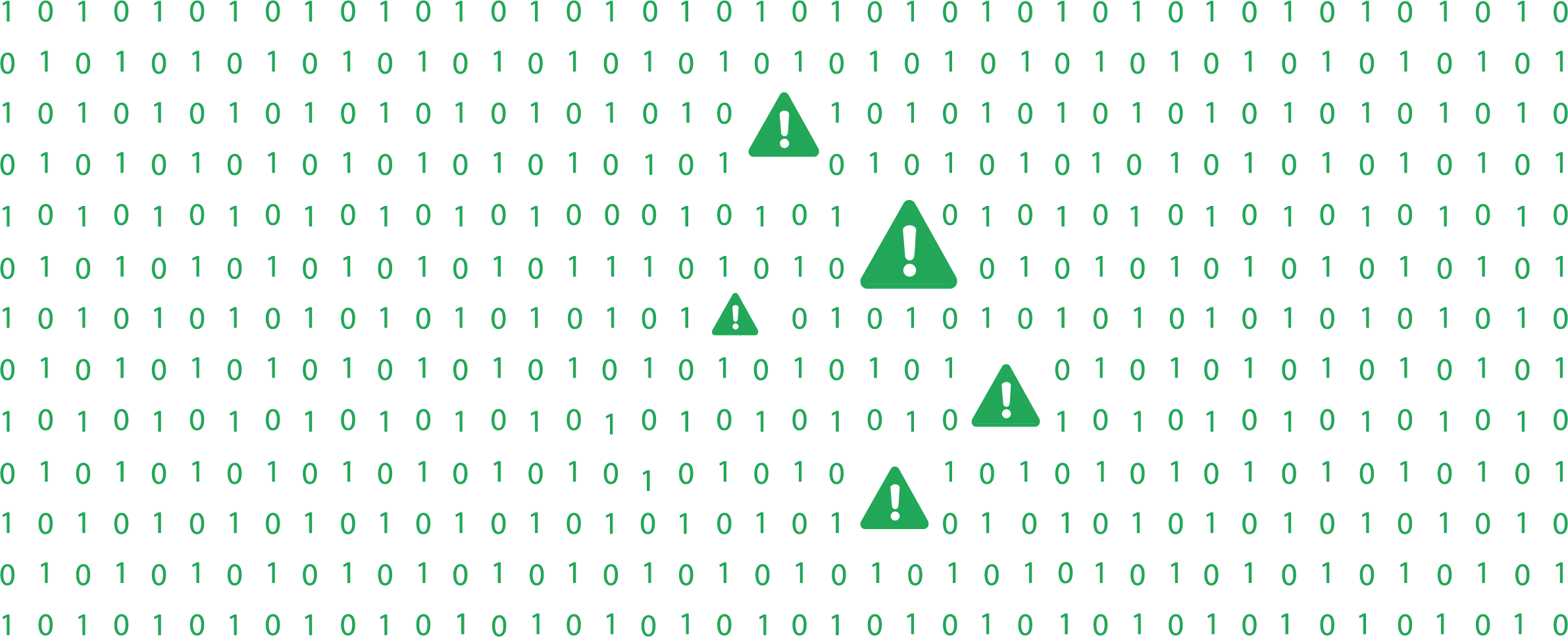What Is Observability?
Observability is the process of trying to figure out how a system works on the inside, by looking at what it does on the outside. It has even grown to be a central theme in today’s technology stacks where it is used to guarantee system availability and speed, particularly in intricate distributed architectures. But it is not just about the data, it is about the knowledge derived from the data that would help keep the system healthy, diagnose problems, and optimize performance.
Observability isn’t new. This term was coined in the 60’s in control theory and it means the ability to make a guess about the internal state of a system from its outputs. But it wasn’t until the last ten years that its use in software systems really took off. With the growth of cloud computing and microservices and distributed systems came a growth in complexity of understanding and debugging these systems. Observability became a crucial solution to tackle these challenges.
Why Is Observability Important?
This trend of observability is actually rooted in the change of software system architectures and operations. In the old days, it was much easier to trace and debug with those old monolithic systems, since everything was in one place. With the evolution of systems, especially with the use of microservices and cloud native architectures, it has become increasingly difficult to manage infrastructure and more importantly understand it.
Some key factors that made observability essential include:
Increased Complexity
Distributed systems involve multiple services, sometimes running across different regions or cloud providers. It is easy to lose track of how one user request flows through many services as these systems expand.
Dynamic & Ephemeral Infrastructure
The infrastructure has become more dynamic and ephemeral with the rise of containers, Kubernetes, and serverless functions. Components can scale up and down, be replaced, or shift automatically. Traditional monitoring methods fall short because they assume more static environments.
Real-Time User Demands
As users expect fast and seamless experiences, the ability to detect and fix problems in real time has become critical. Observability helps ensure you can spot issues before they affect user experience.
The Core Data Classes Of Observability: Logs, Metrics & Traces
In modern software systems, observability hinges on three essential data types: logs, metrics, and traces. Often referred to as the three pillars of observability, these data classes work together to provide visibility into system performance, behavior, and issues.
Logs: The First Line Of Insight
Logs are timestamped records that capture events as they occur within a system. They typically include a message or payload that adds context about the event. Logs come in three formats:
- Plain text: Simple and readable, often the default logging format.
- Structured: Includes fields and metadata, making them easier to parse, search, and analyze.
- Binary: Compact and efficient, but harder to inspect without proper tools.
While plain text logs are still widely used, structured logs are becoming more common due to their versatility and compatibility with modern log analysis tools. When troubleshooting, logs are often the first place teams look to understand what went wrong.
Metrics: Quantitative System Health
Metrics are numerical values that represent specific measurements over time, such as CPU usage, request latency, or error rate. Each metric includes attributes like:
- Name
- Timestamp
- Value
- Key performance indicators (KPIs)
Unlike logs, metrics are inherently structured. This makes them easier to query and more storage-efficient, allowing for long-term retention and trend analysis. Metrics offer a high-level view of system health and are crucial for monitoring performance over time.
Traces: Following The Request Journey
Traces map the path a request takes through a distributed system. As the request moves from service to service, each operation, known as a span, is recorded with data about the specific microservice handling it.
Traces help you visualize how a request flows through your system and pinpoint where delays, failures, or bottlenecks occur. By analyzing traces, teams gain deep insights into system behavior, especially in complex, microservice-based architectures.
Bringing It All Together: Integrated Observability Having logs, metrics, and traces is essential, but using them in isolation, or with disconnected tools, can limit their effectiveness.
To truly unlock observability, these three pillars need to be integrated into a unified platform. When logs, metrics, and traces are correlated in one place, you not only see when issues arise, but you can also understand why they happen.
This holistic approach enables faster root-cause analysis, proactive problem solving, and better overall system reliability.
How Observability Works
In general, observability is an analysis of the overall system behavior that is obtained by the continuous collection and correlation of measurements from every level of infrastructure. It’s not just simply about logs, metrics, and traces (although those are extremely important as well).
Observability involves:
Correlation & Context
Observability tools correlate data points across different services, systems, and environments. This helps you see how an issue in one part of your infrastructure might affect another.
Data Enrichment
Beyond raw data, observability platforms can enrich information with metadata such as service names, environments, or geographic locations, which provides context and makes it easier to trace issues across services.
Real-Time Analysis
Observability systems process data in real time to detect anomalies or performance degradations immediately. This enables proactive responses, allowing teams to address potential issues before they impact users.
Beyond Logs, Metrics & Traces
While logs, metrics, and traces are traditionally seen as the “pillars” of observability, modern observability goes beyond that:
Event Data
Tracking events like user actions, system errors, or configuration changes helps provide context about when and why something happened.
Distributed Context
Observability tools help track a single transaction as it moves through various services, offering insights into where latency, bottlenecks, or failures occur.
System & Network Performance
Beyond application-level metrics, observability involves gathering data on infrastructure and network performance to ensure that issues at any level are captured and understood.
5 Ways Observability Maps Your Entire Infrastructure
Observability helps you achieve end-to-end visibility across your entire infrastructure, which is particularly important in distributed systems. Here’s how observability provides a comprehensive understanding of your infrastructure:
1. Understanding Dependencies
In complex architectures, especially with microservices, services are highly interdependent. Observability allows you to map out and visualize these dependencies, showing how different services interact and how failures or slowdowns in one service affect others. This understanding is crucial for diagnosing and fixing issues faster.
2. Proactive Detection Of Issues
Observability is not just about reacting to issues—it’s about proactively identifying patterns that may indicate a problem. For example, if response times start to increase gradually or error rates rise slightly over time, observability tools can help detect these early warning signs and alert your team before the problem becomes critical.
3. Improved Decision Making
Having access to real-time data across your entire infrastructure allows for better decision-making. For instance, it helps answer questions like:
- Is our system healthy enough to handle increased traffic?
- Do we need to scale up or optimize a particular service?
- Are there recurring issues that need long-term solutions?
4. Enhanced Troubleshooting
When issues do arise, observability speeds up the troubleshooting process. By correlating logs, metrics, traces, and events, you can quickly pinpoint where an issue originated and how it propagated through the system. This can drastically reduce the mean time to resolution (MTTR).
5. Capacity Planning & Optimization
Observability doesn’t just help in fixing issues—it can also assist in capacity planning and performance optimization. By analyzing historical data, teams can identify underutilized resources, performance bottlenecks, and opportunities for optimization, leading to cost savings and better performance.
Historical Perspective: From Monitoring To Observability
Before observability became a focus, most organizations relied on monitoring to track system performance. Traditional monitoring was primarily concerned with predefined metrics—like CPU usage, memory consumption, or disk space. While monitoring worked well for simpler systems, it became inadequate as architectures grew in complexity.
The evolution towards observability started as companies like Google, Netflix, and Amazon built large-scale distributed systems that couldn’t be effectively monitored with traditional tools. These companies pioneered many of the practices we associate with modern observability. They developed new tools and techniques to not only monitor but understand how complex systems behave in real-time.
Monitoring vs Observability: What’s The Difference?
At first glance, monitoring and observability might seem like interchangeable terms, both are used to keep an eye on system health and performance. But dig a little deeper, and you’ll find they serve very different purposes. While closely related and often used together, monitoring and observability are not the same thing.
What Is Monitoring?
Monitoring is all about tracking known issues. You set up dashboards, thresholds, and alerts to detect when something goes wrong, usually based on predefined scenarios. It works well when you already know what kinds of problems to expect.
Think of monitoring as a smoke detector: it’s designed to go off when there’s smoke, but it can’t tell you exactly what’s burning, why it started, or how to stop it.
However, in today’s cloud-native, dynamic environments, this approach often falls short. These systems are constantly shifting, scaling, and evolving. Trying to anticipate every potential failure in advance is simply not feasible.
What Is Observability?
Observability takes a more exploratory approach. Instead of looking only for predefined issues, it gives you the tools and data to ask new questions and investigate unknowns.
When your system is fully instrumented, observability enables you to understand why something is happening, not just what is happening. This makes it ideal for root cause analysis, especially when dealing with unexpected or novel issues.
Traditionally, observability is defined through three pillars: logs, metrics, and traces. But in complex environments, that’s no longer enough. True observability also includes:
- Metadata
- User behavior insights
- Topology and network mapping
- Code-level visibility
Together, these components give you a complete, real-time picture of system health and behavior, empowering teams to respond faster and more accurately.
Key Takeaway
Monitoring tells you when something’s wrong. Observability helps you understand why.
In modern cloud-native ecosystems, relying on monitoring alone isn’t enough. You need observability to uncover the unknowns, navigate complexity, and build more resilient systems.
Why Observability Is Critical Today
In this non-stop world of technology, observability is not a “nice to have,” it is a must. Here’s why it’s so important:
Scale & Complexity
With the shift to cloud native solutions and the use of microservices, the number of moving parts and services increases exponentially. The only way to know that these systems are operating as they should is through observability.
Customer Experience
Downtime or bad performance directly affects customer satisfaction. Observability stops these problems before they even start with early warning and a complete picture of everything going on across the entire infrastructure.
Security & Compliance
Observability isn’t just about performance. It also comes into play with security, allowing teams to spot anomalies that could be indicative of a security breach or compliance violation.
How To Implement Observability In Your Organization
To fully benefit from observability, consider the following steps:
Start With Instrumentation
Make sure your services are instrumented to report the appropriate data (metrics, logs, traces, events) at every level of your stack (app, infra, net).
Adopt An Observability Platform
Choose an observability platform that fits your organizational needs.
Prioritize Alerting & Visualization
Meaningful alerts and dashboards need to be established in order to actively monitor the system’s performance. Make sure that your alerts are actionable and allow your team to correct problems before the user is affected.
Practice Continuous Improvement
Observability isn’t a one-time setup. Keep upgrading your instrumentation, dashboards, and alerts, as your system and your users will always have changing requirements.
How To Choose The Right Observability Tool
As systems grow in complexity, observability becomes essential. Whether you’re building your own tools, adopting open-source solutions, or investing in commercial platforms, the right observability tool can make or break your efforts.
Here’s what to look for when choosing observability tools that truly support your goals:
Seamless Integration With Your Stack
Your observability tool must work effortlessly with your existing infrastructure. It should support your programming languages, frameworks, container orchestration platforms, messaging systems, and any other critical components in your environment. Without proper integration, observability becomes fragmented and ineffective.
A User-Friendly Experience
If a tool is difficult to learn or use, it won’t be adopted by your team. Choose platforms that offer intuitive interfaces, easy setup, and smooth workflows, otherwise, even the best features won’t matter if they’re not used.
Real-Time Insights
The value of observability lies in timely data. Your tool should provide real-time dashboards, reports, and query capabilities so teams can detect issues instantly, understand their impact, and respond quickly.
Advanced Event Handling
Effective observability platforms go beyond raw data collection. They should gather telemetry from across your entire stack, filter out the noise, and enrich signals with the right context. This helps teams focus on what matters and act with confidence.
Powerful Data Visualization
Data is only useful if it’s understandable. Look for tools that offer clear, visual representations of system behavior, dashboards, graphs, interactive summaries, making it easier for teams to interpret complex data fast.
Contextual Awareness
When incidents occur, context is everything. The tool should help you see how performance has changed over time, how it relates to other changes in your system, and what components are affected. Rich context improves root cause analysis and accelerates resolution.
Built-In Machine Learning
Machine learning can significantly enhance observability. With anomaly detection, predictive alerts, and automated insights, ML-driven tools help teams proactively identify and address issues before they escalate.
Aligned With Business Outcomes
Ultimately, your observability tools should deliver measurable business value. Evaluate them based on the KPIs that matter most to your organization, such as deployment speed, system uptime, incident resolution time, and overall customer experience.
Observability isn’t just about monitoring, it’s about empowering teams with the data and context they need to build, scale, and support resilient systems. Choose tools that integrate, visualize, automate, and drive value across both technical and business dimensions.
The Business Impact Of Investing In Observability
Observability has really become a cornerstone in any organization that manages modern infrastructure. It makes it possible to see and understand what is going on with those complex distributed systems, which in turn helps the teams to troubleshoot, optimize, and plan better. So if organizations invest in observability, they will see less system downtime, more reliability, and a better user experience.









